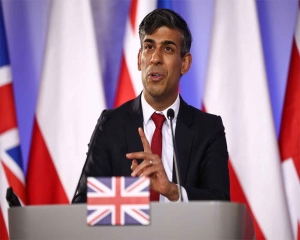With 1.3 million deaths annually, viral hepatitis stands as the second leading infectious cause of death worldwide, trailing only tuberculosis. Hepatitis B is responsible for 83 per cent of these deaths, with hepatitis C accounting for the remaining 17 per cent, according to the World Health Organization’s 2024 Global Hepatitis Report released recently.
Despite advancements in diagnostic tools and treatments, coverage rates for testing and treatment have stalled. However, achieving the WHO’s elimination goal by 2030 remains feasible with urgent action, as per the report which reveals that there are 254 million people who are afflicted with hepatitis B, and 50 million with hepatitis C in 2022.
“Half of the burden is among people aged 30–54, with 12 per cent among children under 18. Men constitute 58 per cent of all cases. New infections have slightly decreased, with 2.2 million new cases in 2022, down from 2.5 million in 2019.”
However, what is a matter of concern is that diagnosis and treatment coverage rates are far below the global targets for both hepatitis B and C.
Data shows that only 13 per cent of people with chronic hepatitis B and 36 per cent with hepatitis C have been diagnosed. “Treatment rates are even lower, with only 3% receiving antiviral therapy for hepatitis B and 20% receiving curative treatment for hepatitis C,” says the report, attributing the low rates to disparities in pricing and service delivery.
The report said that many countries fail to procure affordable generic medicines, leading to pricing disparities. “Service delivery remains centralized and vertical, with out-of-pocket expenses for many affected populations,” it said.
“This report paints a troubling picture: despite progress globally in preventing hepatitis infections, deaths are rising because far too few people with hepatitis are being diagnosed and treated,” said WHO Director-General Dr Tedros Adhanom Ghebreyesus. “WHO is committed to supporting countries to use all the tools at their disposal - at access prices - to save lives and turn this trend around.”
New incidence estimates indicate a slight decrease compared to 2019, but the overall incidence of viral hepatitis remains high. In 2022, there were 2.2 million new infections, down from 2.5 million in 2019.
These include 1.2 million new hepatitis B infections and nearly 1 million new hepatitis C infections. More than 6000 people are getting newly infected with viral hepatitis each day.
The revised estimates are derived from enhanced data from national prevalence surveys. They also indicate that prevention measures such as immunization and safe injections, along with the expansion of hepatitis C treatment, have contributed to reducing the incidence.
Across all regions, only 13% of people living with chronic hepatitis B infection had been diagnosed and approximately 3% (7 million) had received antiviral therapy at the end of 2022. Regarding hepatitis C, 36% had been diagnosed and 20% (12.5 million) had received curative treatment.

























